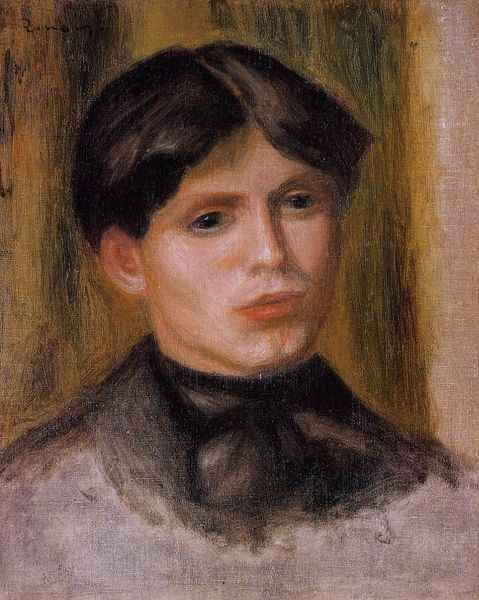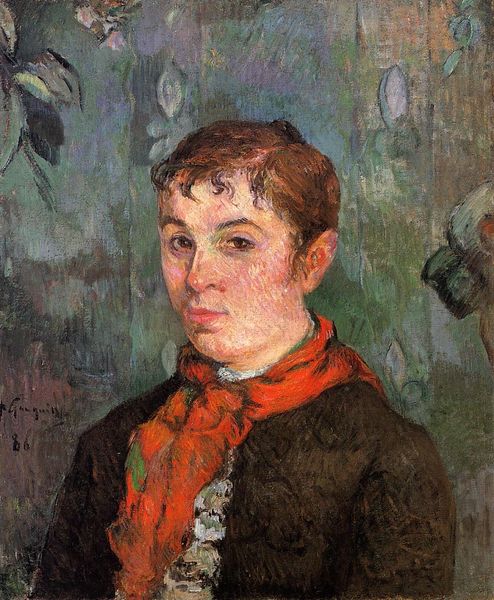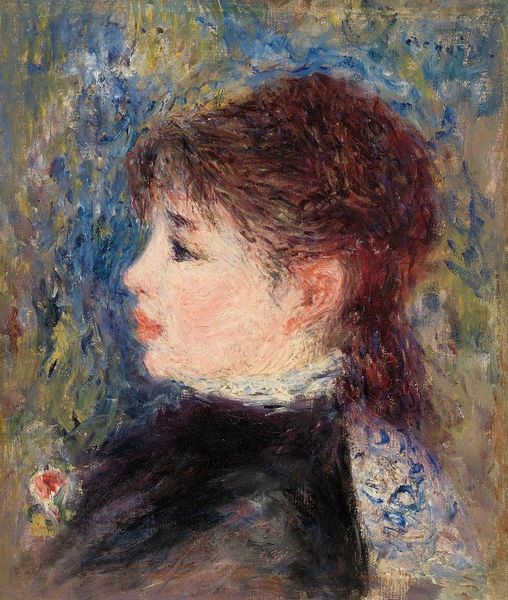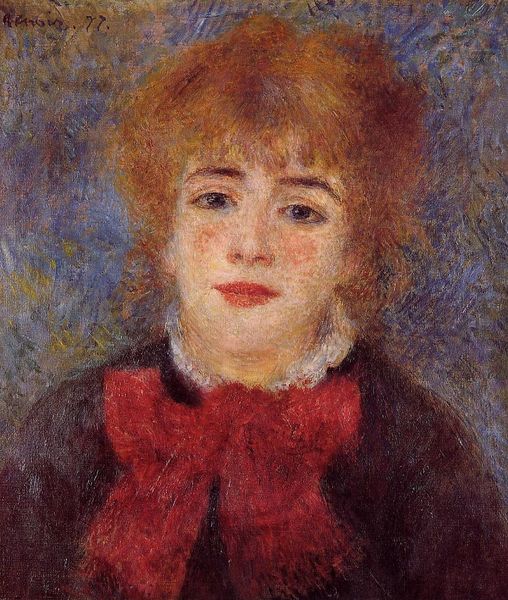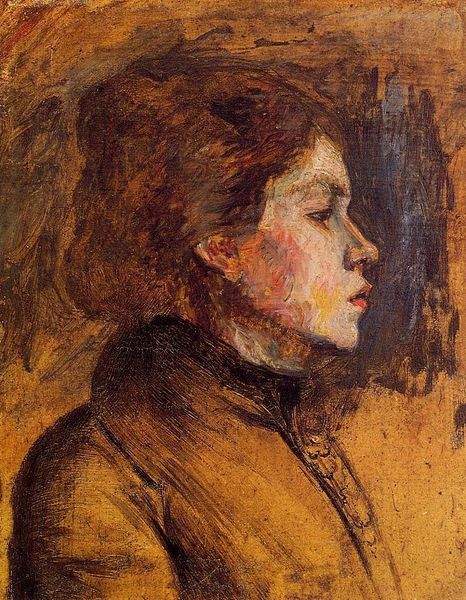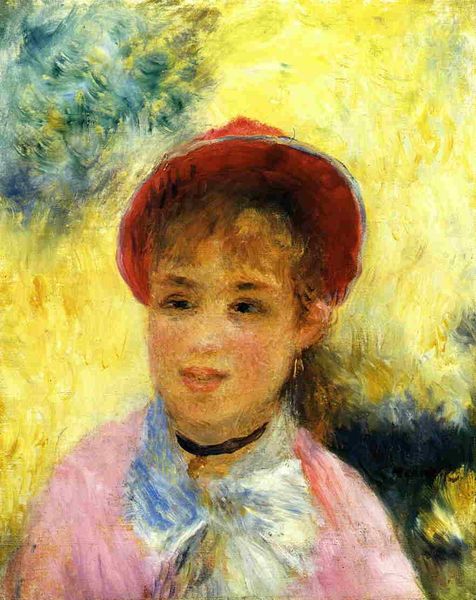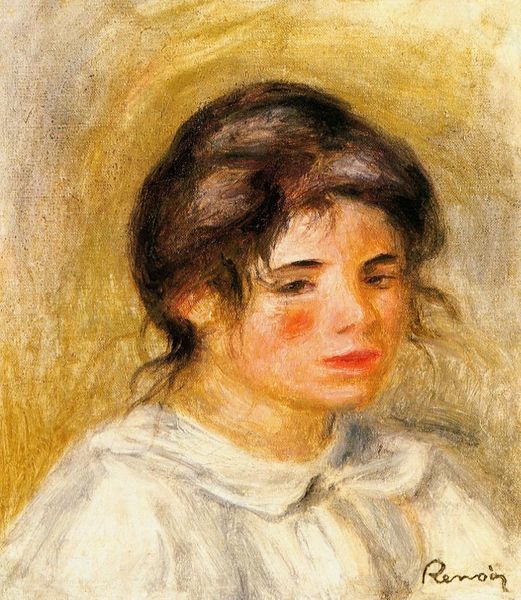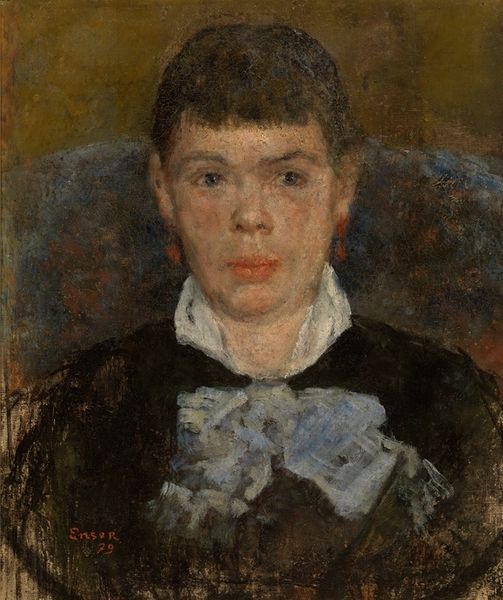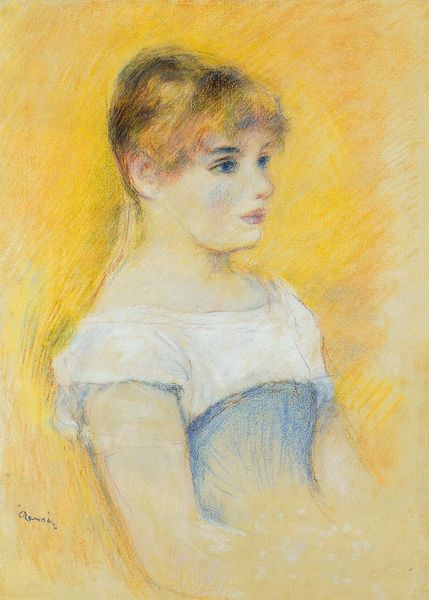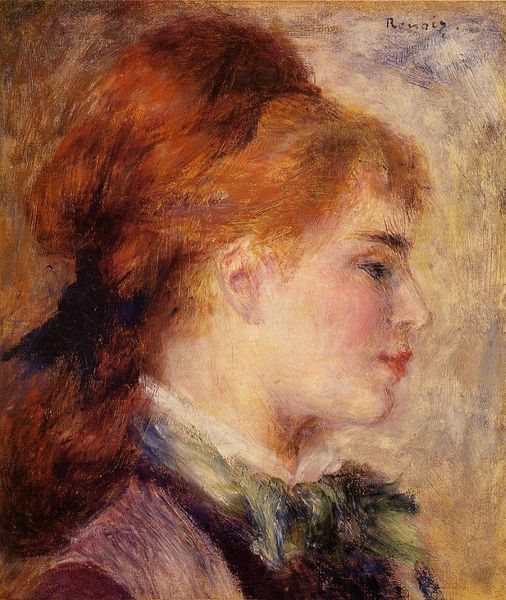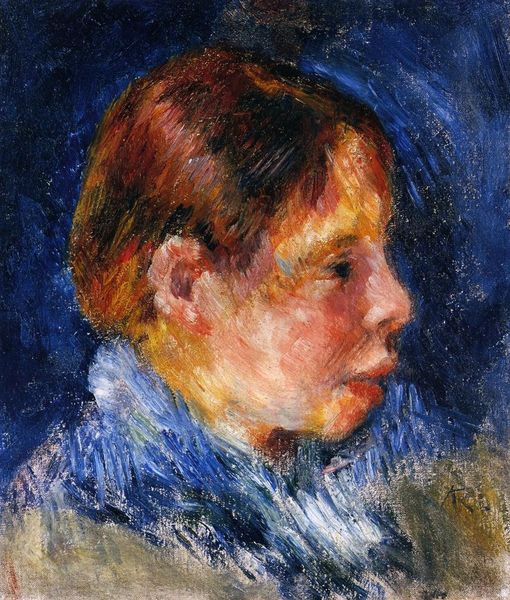
painting, oil-paint
#
portrait
#
figurative
#
painting
#
impressionism
#
oil-paint
#
figuration
#
oil painting
Copyright: Public Domain: Artvee
In 1877, Pierre-Auguste Renoir painted "Georges Rivière" in France, using oil on canvas. This portrait provides a window into the social circles of the Impressionists. Georges Rivière was not just a model but a critic and staunch defender of Renoir and his contemporaries. The art world of 1870s Paris was highly institutionalized, dominated by the Academy and its Salon, which dictated what was considered acceptable art. Impressionists like Renoir challenged these norms by depicting modern life with loose brushwork and a focus on light and color. Rivière’s support was crucial in legitimizing this new mode of painting. His writings helped shape public opinion and create a market for Impressionist works, countering the conservative tastes of the Academy. To truly understand this painting, we might delve into the archives of art criticism from the period or explore the biographies of key figures in the Impressionist movement. Art history connects the visual to the social, revealing how art both reflects and shapes its cultural moment.
Comments
No comments
Be the first to comment and join the conversation on the ultimate creative platform.
